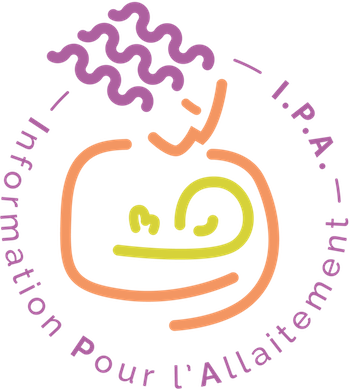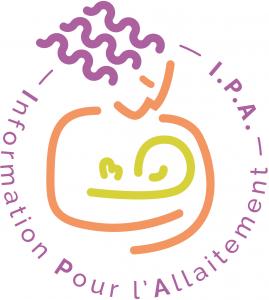Catégories
Documents disponibles dans cette catégorie (23)
 Ajouter le résultat dans votre panier Faire une suggestion Affiner la recherche
Ajouter le résultat dans votre panier Faire une suggestion Affiner la rechercheArticle : texte imprimé
texte imprimé
Claude, Suzanne Didierjean-Jouveau, Auteur | Chêne-Bourg : Jouvence éditions | Les pratiques Jouvence | 2016"Pourquoi l'allaitement fait-il vraiment la différence pour la santé de la mère et de l'enfant et comment faire pour que ça marche ? Contrairement à ce que l'on peut entendre parfois, promouvoir l'allaitement exclusif au sein les premiers mois d[...]Article : texte imprimé
Feng Zhang, Auteur ; Haiou Xia, Auteur ; Meiyun Shen, Auteur |"Background: Suction pressure has been reported to be a key driving force of lactation. An infant's sucking at its mother's breasts is the major stimulus to post-natal prolactin (PRL) secretion, and PRL is the essential hormone for lactation and[...]Article : texte imprimé
Feng Zhang, Auteur ; Haiou Xia, Auteur ; Meiyun Shen, Auteur |Background: Suction pressure has been reported to be a key driving force of lactation. An infant's sucking at its mother's breasts is the major stimulus to post-natal prolactin (PRL) secretion, and PRL is the essential hormone for lactation and [...]Article : texte imprimé
Carlo Dani, Auteur ; Alessandra Cecchi, Auteur ; Arianna Commare, Auteur |Background: Early skin-to-skin contact (SSC) significantly increases the breastfeeding rate in healthy term infants. Objective: This study aimed to confirm previously described behavioral sequences during SSC. Methods: We recorded live [...]Article : texte imprimé
Iva Burinova, Auteur ; Katarina Kulihova, Auteur ; Veronika Vitkova, Auteur |Background: Goals of treatment of orofacial cleft are to improve feeding, speech, hearing, and facial appearance. Early surgery brings faster healing, better cosmetic effect, and fewer complications. Breastfeeding rates after early surgery are [...]Article : texte imprimé
Article : texte imprimé
Emel Buldur, Auteur ; Nalan Yalcin Baltaci, Auteur ; Demet Terek, Auteur ; Mehmet Yalaz, Auteur ; Ozge Altun Koroglu, Auteur ; Mete Akisu, Auteur ; Nilgun Kultursay, Auteur |Aim: The aim of this study is to compare the efficiency of a new method called “finger feeding” with a well-known technique called syringe feeding for improving sucking skills and accelerating transition to breastfeeding in preterm infants. M[...]Article : texte imprimé
Helene M. Loos, Auteur ; Dimitra Mastorakou, Auteur ; JM Spahn, Auteur ; Shiyi Zhang, Auteur |Article : texte imprimé
Feng Zhang, Auteur ; Jing Cheng, Auteur ; Shuhan Yan, Auteur |Objective: To explore the relationship of early breastfeeding behaviors after Cesarean section (CS) to long-term breastfeeding outcome. Materials and Methods: A total of 648 healthy breastfeeding primiparas (333 delivered by CS, and 315 by va[...]Article : texte imprimé
Kamile Akca, Auteur ; Aynur Aytekin, Auteur |Background: Starting and continuing breastfeeding are influenced by many factors affecting the mother and the infant. No study is found in the literature investigating how to achieve success in the first nutrient-sucking experiences by decreasin[...]Article : texte imprimé
Juliette Herzhaft-Le Roy, Auteur ; Marianne Xhignesse, Auteur ; Isabelle Gaboury, Auteur |Background: Despite well-known recommendations from national and international bodies including the World Health Organization, few mothers achieve the goal of breastfeeding exclusively for 6 months. Half of mothers stop breastfeeding due to bio[...]Article : texte imprimé
Juliette Le Roy, Auteur ; Juliette Herzhaft-Le Roy, Auteur ; La Leche League France, Auteur |Article : texte imprimé
Brittany Anne Jackson, Auteur ; Carrie M. Pawlowski, Auteur ; Gary M. Weiner, Auteur ; Julie Sturza, Auteur ; Kate Peterson Stanley, Auteur |Background: Postpartum mothers express and store breast milk using a hospital-grade pump and manufacturer-specific kit (flanges, bottles, tubing, valves, and membranes). After hospital discharge, mothers may attempt to interchange kits from diff[...]texte imprimé
Nicole Doré, Auteur ; Danielle Le Hénaf, Auteur | INSPQ - Institut national de santé publique | 2017Un guide pratique destiné aux mères et pères qui offre une information appuyée scientifiquement sur la grossesse, l’accouchement et les deux premières années de vie de l’enfant.[Présentation par IPA]
















